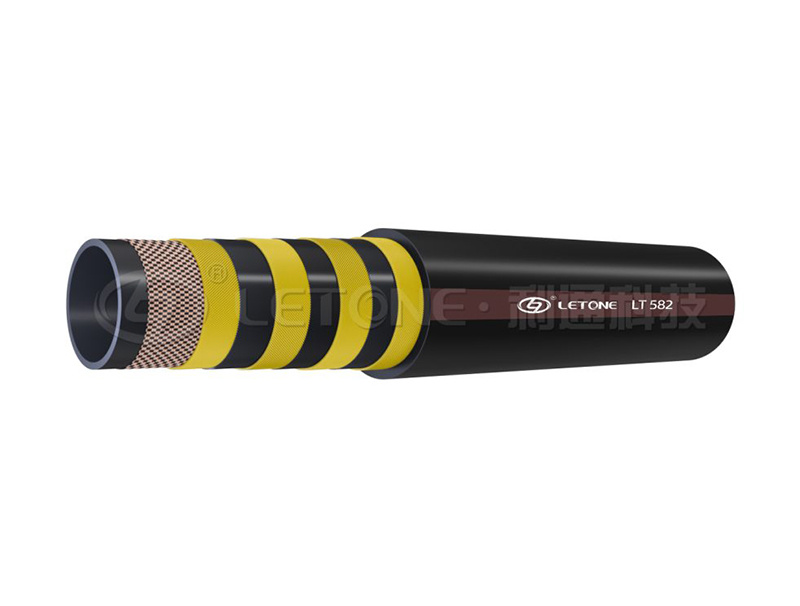Exploring the Essential Role of Offshore Oil Rig Hoses in Modern Construction
Aug 07,2025

Exploring the Essential Role of Offshore Oil Rig Hoses in Modern Construction
Table of Contents
1. Introduction to Offshore Oil Rig Hoses
2. What Are Offshore Oil Rig Hoses?
3. Key Functions of Offshore Oil Rig Hoses
3.1 Transporting Fluids Effectively
3.2 Ensuring Safety and Efficiency
4. Types of Offshore Oil Rig Hoses Used in Construction
4.1 Flexible Hoses
4.2 Rigid Hoses
4.3 Composite Hoses
5. Offshore Oil Rig Hoses and Construction Safety
5.1 Reducing Hazards in Construction
5.2 Compliance with Safety Regulations
6. The Impact of Offshore Oil Rig Hoses on Project Efficiency
6.1 Streamlining Operations
6.2 Cost-Effectiveness and Resource Management
7. Future Trends in Offshore Oil Rig Hoses for Construction
8. Frequently Asked Questions (FAQs)
9. Conclusion
1. Introduction to Offshore Oil Rig Hoses
In the ever-evolving world of construction, efficiency and safety are paramount. **Offshore oil rig hoses** have emerged as crucial components that maintain operational integrity on construction sites, particularly those near marine environments. These hoses serve various functions, from transporting fluids to ensuring safety protocols are adhered to.
2. What Are Offshore Oil Rig Hoses?
Offshore oil rig hoses are highly specialized tubes designed to transfer fluids, gases, and other materials in marine settings. They possess unique properties that withstand the harsh conditions of offshore environments, including extreme temperatures, high pressures, and corrosive elements. Manufactured from durable materials, these hoses are essential for conducting operations not only on oil rigs but also in various construction projects adjacent to water bodies.
3. Key Functions of Offshore Oil Rig Hoses
Understanding the functions of offshore oil rig hoses can illuminate their significance in modern construction.
3.1 Transporting Fluids Effectively
One of the primary roles of offshore oil rig hoses is to transport fluids such as oil, water, and other critical materials. Their design ensures **high flow rates** and adaptability to various pressures, allowing for consistent and reliable movement of materials essential for construction activities.
3.2 Ensuring Safety and Efficiency
Safety is non-negotiable in construction. Offshore oil rig hoses are designed with safety features that prevent leaks and spills, reducing the risk of accidents. Their structural integrity promotes efficient operations, ensuring that projects can proceed without unnecessary interruptions.
4. Types of Offshore Oil Rig Hoses Used in Construction
Different types of offshore oil rig hoses cater to varying requirements in construction projects.
4.1 Flexible Hoses
Flexible hoses are versatile and easily maneuverable, making them ideal for dynamic construction environments. They can adapt to movement and changing conditions, ensuring fluid transfer without obstruction.
4.2 Rigid Hoses
Rigid hoses are designed for high-pressure applications and are less prone to bending or collapsing under stress. Their robust construction is suitable for transporting heavy materials.
4.3 Composite Hoses
Composite hoses combine various materials, offering enhanced chemical resistance and flexibility. These hoses are particularly beneficial in complex construction environments where multiple fluids may be transported.
5. Offshore Oil Rig Hoses and Construction Safety
Integrating offshore oil rig hoses into construction practices plays a pivotal role in enhancing safety.
5.1 Reducing Hazards in Construction
The use of high-quality hoses mitigates risks associated with fluid leaks. By maintaining secure connections and employing advanced materials, construction teams can minimize hazards that may lead to accidents or environmental damage.
5.2 Compliance with Safety Regulations
Regulatory compliance is essential in construction. Offshore oil rig hoses are often designed to meet stringent industry standards, ensuring that projects adhere to regulations aimed at protecting workers and the environment.
6. The Impact of Offshore Oil Rig Hoses on Project Efficiency
Efficiency is the cornerstone of successful project completion. Offshore oil rig hoses contribute significantly in several ways.
6.1 Streamlining Operations
By providing reliable fluid transport, these hoses enable seamless operations on construction sites. With less downtime for maintenance or repairs, projects can stay on track and within budget.
6.2 Cost-Effectiveness and Resource Management
Investing in high-quality offshore oil rig hoses can lead to long-term savings. Their durability reduces the frequency of replacements and repairs, allowing construction companies to allocate resources more effectively.
7. Future Trends in Offshore Oil Rig Hoses for Construction
As technology advances, offshore oil rig hoses are expected to undergo significant innovations. The future may see the incorporation of smart sensors that monitor hose conditions in real-time, enhancing safety and efficiency further. Sustainable materials may also become more prevalent, aligning with global shifts towards environmentally friendly practices in construction.
8. Frequently Asked Questions (FAQs)
What are the primary materials used in offshore oil rig hoses?
Offshore oil rig hoses are often made from materials such as rubber, PVC, and composite fabrics designed to withstand harsh marine conditions.
How do I know when to replace an offshore oil rig hose?
Regular inspections should be conducted. Signs of wear, such as cracks or leaks, indicate that replacement is necessary.
Are offshore oil rig hoses customizable for specific applications?
Yes, many manufacturers offer customization options to meet the unique requirements of different construction projects.
What safety standards do offshore oil rig hoses comply with?
These hoses typically adhere to industry standards set by organizations such as the American Petroleum Institute (API) and other relevant regulatory bodies.
Can offshore oil rig hoses be used in inland construction projects?
Absolutely, while they are designed for offshore use, their durability and efficiency make them suitable for various inland construction applications as well.
9. Conclusion
Offshore oil rig hoses are integral to modern construction, providing essential functions that enhance efficiency, safety, and effectiveness. By understanding their roles and types, construction professionals can better appreciate their impact on project success. As the industry evolves, the continued development of these hoses will ensure they remain a vital resource, driving advancements in both construction practices and safety measures. Investing in high-quality offshore oil rig hoses is not just a choice; it is a commitment to excellence and responsibility in construction.
Contact Us
E-mail :
admin@lionflex.cn
Mobile:
+86-15921166698
Address:
Hangzhou Xiaoshan District Heshang Town Daqiao Industrial Zone







